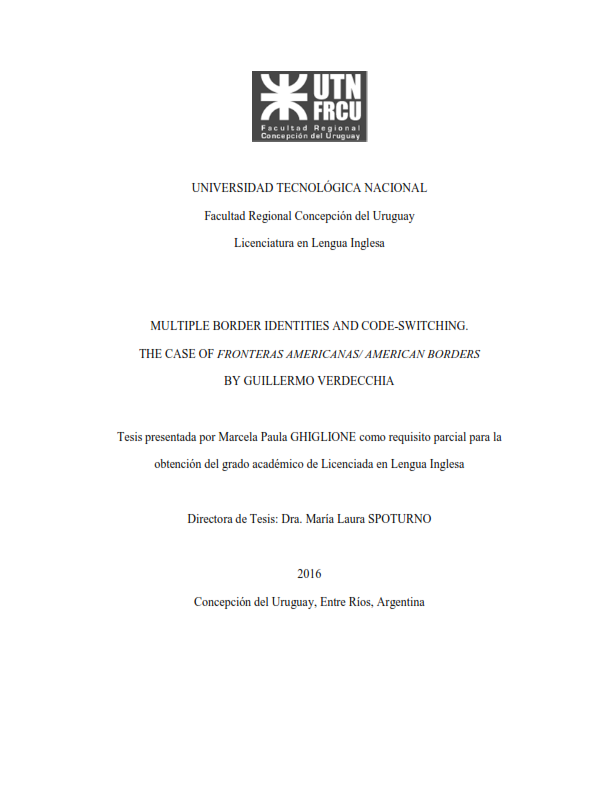Multiple border identities and code-switching : the case of fronteras americanas / American Borders by Guillermo Verdecchia
Resumen
The current thesis aims at gaining a better understanding of the dramatic text Fronteras Americanas/ American Borders by Guillermo Verdecchia (1993- 2011) in relation with the discursive construction of border identity through the use of code-switching. Following an interdisciplinary approach which combines the fields of Sociolinguistics and Postcolonial, Literary and Cultural Studies, the different instances of code-switching within the play have been analysed from various points of view. In line with Muysken’s (1997, 2000) patterns of alternation, insertion and congruent lexicalization, the case study offers an analysis of the structural configuration of CS in the dramatic text. The Markedness Model (Myers-Scotton 1989, 1993 and 1998) has also been deployed to interpret the social motivations for these linguistic switches from a functional perspective, focusing on the five maxims put forward by the author. This analysis has been enriched by the literary and cultural angles approached by Bromley (2000), Martin (2005) and Maver (2009), whose perspectives have been enhanced by the exploration of the concepts of third space (Bhabha [1994] 2004), home (Sarup 1996) and the formation of a border identity (Michaelsen and Johnson 1997; Ashcroft et al. (2000- 2007). The results of this interdisciplinary analysis revealed that multiple border identities are recreated by instances of code-switching in the dramatic text Fronteras Americanas/ American Borders (1993- 2011). Moreover, code-switching has proved to be a functional and cultural method for inscribing alterity and recreating a sense of a border home.
Colecciones
El ítem tiene asociados los siguientes ficheros de licencia:


